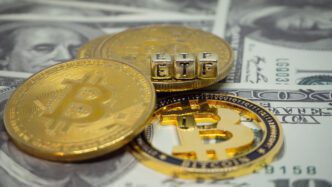In a startling development, consumer sentiment in the U.S. has taken a significant hit, dropping by 11% this month to a preliminary reading of 50.8, according to the University of Michigan’s latest survey released on Friday. This marks the second-lowest level of consumer confidence since records began in 1952, surpassing even the depths of the Great Recession.
The current decline in sentiment is largely attributed to President Donald Trump’s ongoing trade war, which has stirred fears of escalating inflation. This was exacerbated by Trump’s recent announcement of broad-reaching tariffs, as the survey indicates a pervasive sense of unease across all demographics, including age, income, education, geographic region, and political affiliation.
“The decline in sentiment mirrors last month’s findings and cuts across all sectors,” remarked Joanne Hsu, director of the survey. “Since December 2024, sentiment has plunged by over 30%, largely due to the unpredictable developments in the trade war,” she added.
The Federal Reserve and Wall Street are closely monitoring how this growing pessimism might impact consumer spending, which constitutes about 70% of the U.S. economy. There is particular concern about whether Americans will lose faith in the possibility of inflation returning to normal levels in the near future.
While President Trump has temporarily halted his extensive tariff increases on numerous countries for 90 days, a 10% baseline duty remains on all imports, along with additional tariffs on specific products and commodities. According to Fitch Ratings, this short-lived but substantial tariff increase marks the most significant rise in U.S. duties in 200 years of data. Notably, China was excluded from the tariff reprieve, continuing the tense economic standoff between the world’s two biggest economies. In retaliation, Beijing has increased tariffs on U.S. imports to 125% from 84%.
The survey was conducted from March 25 to April 8, missing the immediate response to the newly announced tariff delay. In economic terms, such surveys are considered “soft data,” contrasting with “hard data,” which measures actual economic activity, such as retail sales. The soft data clearly reflects the adverse effects of Trump’s tariffs, showing that the share of consumers expecting unemployment to rise has increased for five consecutive months, now more than double the figure from November 2024, and the highest since 2009.
Despite the gloomy sentiment, hard economic data still presents a relatively positive picture, with employers continuing to hire robustly, and consumer spending not yet showing a significant slowdown, although retail sales have recently been weaker than expected.
Federal Reserve Chair Jerome Powell highlighted the discrepancy between negative survey results and ongoing consumer spending, remarking, “Sometimes the surveys are very negative, but they keep spending.” He noted that spending persisted through the pandemic and continues despite higher inflation.
The recent market volatility, spurred by Trump’s tariffs, poses a threat to the spending patterns of wealthier Americans, who have sustained the economy with their financial gains. As Bill Adams, chief economist at Comerica Bank, pointed out, “Wealthy consumers’ stock market gains kept the economy growing in 2024 despite high prices, but if this continues, confidence and spending could falter.”
Crucially, one survey measure that significantly influences the Fed is Americans’ inflation expectations. These perceptions can become self-fulfilling, as consumers adjust their spending in anticipation of future inflation. Currently, expectations for inflation in the coming year have surged to 6.7% from 5% in March, the highest since 1981, with projections for the next five to ten years also rising.
Dallas Fed President Lorie Logan emphasized the stakes, stating, “History teaches that when higher inflation expectations become entrenched, the road back to price stability is longer, the labor market weaker, and economic scars deeper.” With recent experiences of high inflation leaving consumers sensitive to price increases, inflation expectations are particularly vulnerable to becoming unanchored.
The Bottom Line
The sharp decline in consumer sentiment underscores the palpable anxiety over economic conditions and trade policies under President Trump. For the average American, this translates into uncertainty about job security, purchasing power, and the overall economic outlook. Rising inflation expectations further compound these concerns, potentially influencing consumer behavior and spending patterns.
For businesses, especially those reliant on consumer spending, navigating these turbulent times could prove challenging. They may need to adapt to shifting consumer priorities and the ongoing volatility in trade policies. Meanwhile, policymakers must balance managing inflation expectations with sustaining economic growth, a task made more complex by global trade dynamics.
Overall, the current economic landscape requires vigilance from all stakeholders, as the impacts of these developments ripple through the economy, affecting consumer confidence, business strategies, and monetary policy in the months ahead.







